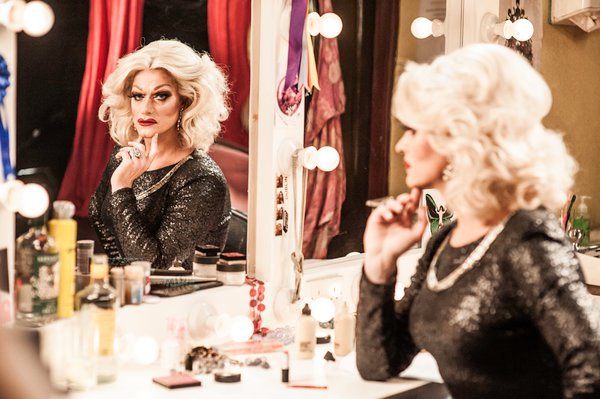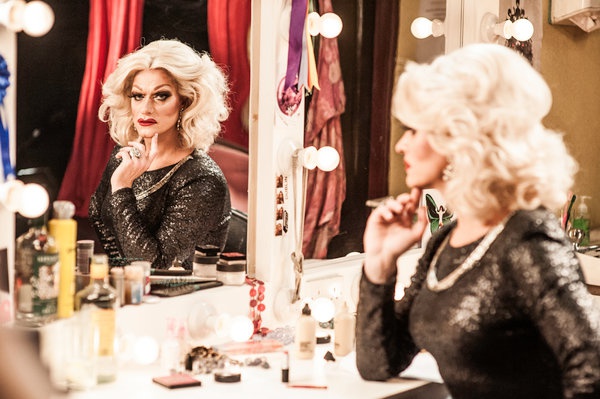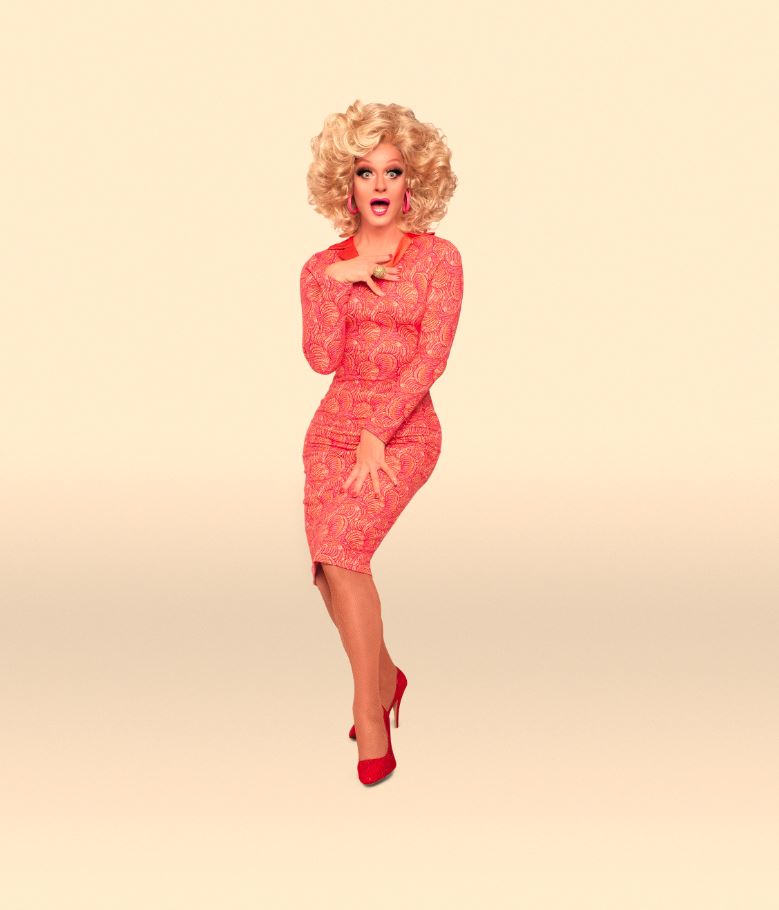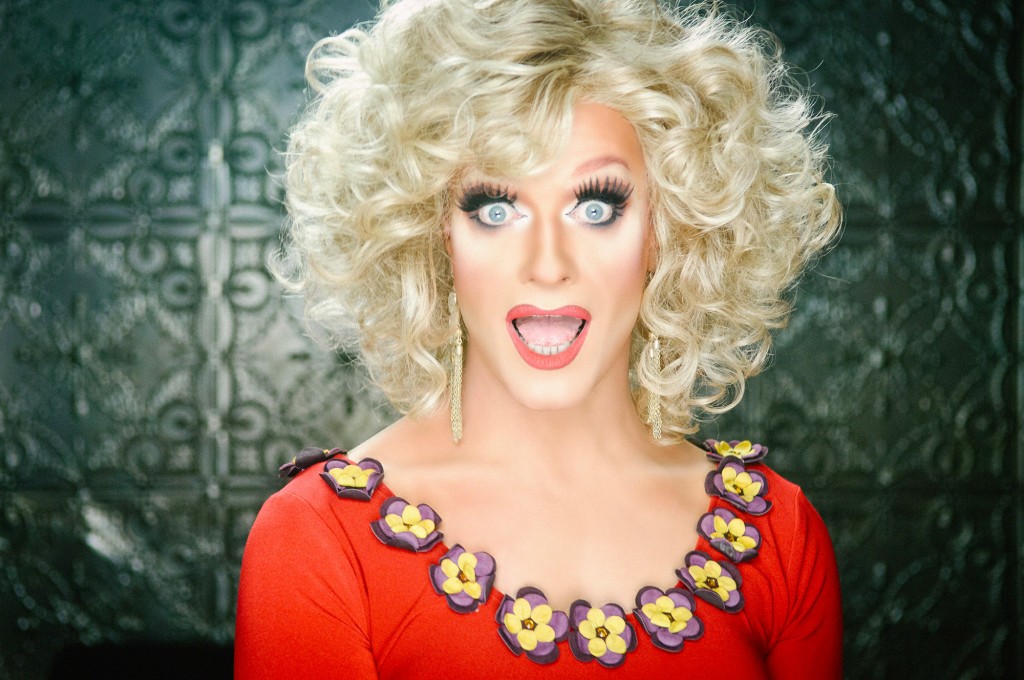Interview | Panti Bliss talks about her new film ‘The Queen of Ireland’
By Ben Kelly

Panti Bliss is Ireland’s premier drag queen, who rose to international attention just as the country was coming of age on gay rights and marriage equality. Across the past few years, it has all been caught on camera by director Conor Horgan, and is now presented in The Queen of Ireland, a film which captures not only the excitement of Panti in performance, but the behind the scenes life of her creator Rory O’Neill – who sat down with Attitude’s Ben Kelly to chat all about it.
“When we started making the documentary five years ago, it was only going to be a small little character documentary,” Rory explains, as he meets me in London’s Century Club to discuss his big screen debut. But five years is a long time, and much changed for Rory – and indeed Panti – in the interim.
Born in the 1960s in Co. Mayo, Rory O’Neill broke out of small town Ireland and created the drag queen Panti Bliss in Tokyo in the early 1990s, before returning to Dublin where he now runs one of the city’s biggest gay nightlife attractions, Pantibar. This is in many ways the base of an international operation, which sees him performing all over the world with his show High Heels in Low Places. Now, the full Panti experience is on screen for all to see, in The Queen of Ireland.
As a confident, in command, stage performer, was it weird to give himself over to the vision of someone else? “Not really, because in a way, every time you see yourself, it’s always filtered through somebody else’s view – whether it’s a TV producer, or an audience member. The only thing weird about this of course is that Rory was a part of it,” he explains, slipping into the third person – which becomes commonplace when you’re constantly living between two personas.
Rory prefers to perform as Panti: “a court jester, whose role is to say the un-sayable.” In February 2014, Panti delivered a memorable speech about homophobia at the Abbey Theatre in Dublin, which became an internet sensation, and an LGBT call to arms.
However, when Rory saw the first cut of the movie, he was surprised that it was very low on Panti performances. “To me, my life is constantly going round doing live shows: Australia, the US, the UK and around Ireland. But in the documentary they almost didn’t show any of that, they only showed the show I did in my little hometown. It was weird for me that the biggest thing in my life wasn’t in it – so that’s funny, how other people see you.”
Instead, it focuses on Rory’s relationships with his friends, collaborators, and crucially – his family. In one scene Panti is seen being accompanied to an awards ceremony by all the other O’Neill sisters; and there are powerful interviews with his parents, who have been overwhelmingly supportive of him through coming out as gay, coming out as a drag queen, and coming out as HIV positive.
Possibly the most touching scene in the film comes when they walk Panti, arm in arm, to a live show in their home town of Ballinrobe, just a week after Ireland’s historic referendum on same sex marriage. It seems like the entire village poured out to watch the show, and in a way, to celebrate the major social change that had just taken place. “There was this atmosphere in the country anyway, but when I went down the night before there were rainbow flags all over the town, they had really gone all out. It was incredible,” he laughs, “the teenage me was just – mind blown!”
We see Panti telling lewd jokes while Irish grannies allow themselves a hearty chuckle, totally entertained, totally behind her and the community she represents. Rory’s voiceover is gradually accompanied by the sound of John Grant’s Glacier as the film concludes. “I had an opportunity to resolve something with my parents, the town I came from, to get that closure, and that’s an opportunity that very few people get to have.”
For a country in which many gay people have long felt the need to emigrate, or stay put and live a lie, Ireland is now an undeniably brighter place, which welcomes and cherishes its LGBT citizens, and what makes The Queen of Ireland stand out as a powerful documentary is not just the life story of Rory or Panti, but the overarching backdrop which details this social journey. “I keep saying to people, it’s only ostensibly about me,” he says. “Really it is actually about an Ireland that’s changed, and how Ireland is changing. They’re using me as a theatrical device to tell that story.”
The marriage equality referendum in Ireland was undoubtedly the LGBT story of the year; not just because it was the first time a country supported the measure in a public vote, but because it inspired hope that even the smallest of countries, with the most conservative and religious of histories, could make change happen. But Rory acknowledges the referendum route has its pros and cons.
“The whole country has this massive conversation about it. You’ve all argued and discussed it endlessly, everything’s been put on the table and then we all decide,” he says, pointing out that a referendum means people can’t blame a political elite for ‘pushing it through’. In Ireland’s case, 63% of the population voted Yes. However, Rory doesn’t recommend it to other countries. “It’s risky. If you get a No vote you might have to wait another generation, or two generations to have another referendum. But having got the right result it is definitely much more powerful.”

“I do think that the referendum has confirmed the change that has happened over the previous years, but I also think things have changed since. The obvious one is you see gay couples holding hands in Dublin in a way that you didn’t really see before, and I think that’s because that conversation sort of made the LGBT community much more secure at home. They feel more confident that other people are OK with it.”
Crucially, Rory feel this new Ireland will profoundly change the way young LGBT people feel about themselves growing up. “They’re going to grow up in a country where they’ll have a gay neighbour, or a lesbian aunt who is getting married or whatever, and the family are all going to the same ceremony. It normalises it. And of course they just have many more role models now. When I was 13 in Co. Mayo, if I had seen a drag queen getting an award on TV it would have meant the world to me, but that would never have happened in 1970s Ireland; but now it does happen and it’s just another world.”
Speaking in the week that a DUP petition of concern blocked the passing of same sex marriage in Northern Ireland, Rory says it’s only a matter of time before the waters of change burst through that dam too.
“They can’t hold out for much longer, the pressure now is just intense. And it has become ridiculous because a Northern Irish couple can get married in Glasgow or Dublin, because marriage is recognised in the rest of the UK and Ireland. But in Northern Ireland it’s still only civil partners. It’s an untenable position to be in and that’s the DUP blocking it – but even they can’t hold out forever.”
Rory describes himself as an ‘accidental activist’, who was thrust into the spotlight of the marriage debate, and turned into something of a symbol; but have the events of the past few years tempted him to get into real politics in the future? “I would make a terrible party politician in real politics, but I can definitely do the Presidency bit,” he laughs, referencing a recent comment he made about how he’d make a good head of state for Ireland.
“You’ve got to be quite good at making speeches and good at posing for photographs and I am really good at both those things,” he says, fairly seriously. “Recently I was opening the science fair in Trinity College. In what other country in the world would the highest brow university ask a drag queen to open their science fair?!” Perhaps Panti may rise up to become the country’s first citizen in the future, but regardless, she seems certain to remain The Queen of Ireland.
The Queen of Ireland is out in cinemas, on DVD and VOD from November 16.
More stories:
Zachary Quinto is Attitude’s Red Issue cover guy
Watch: The weird things all gay couples do



